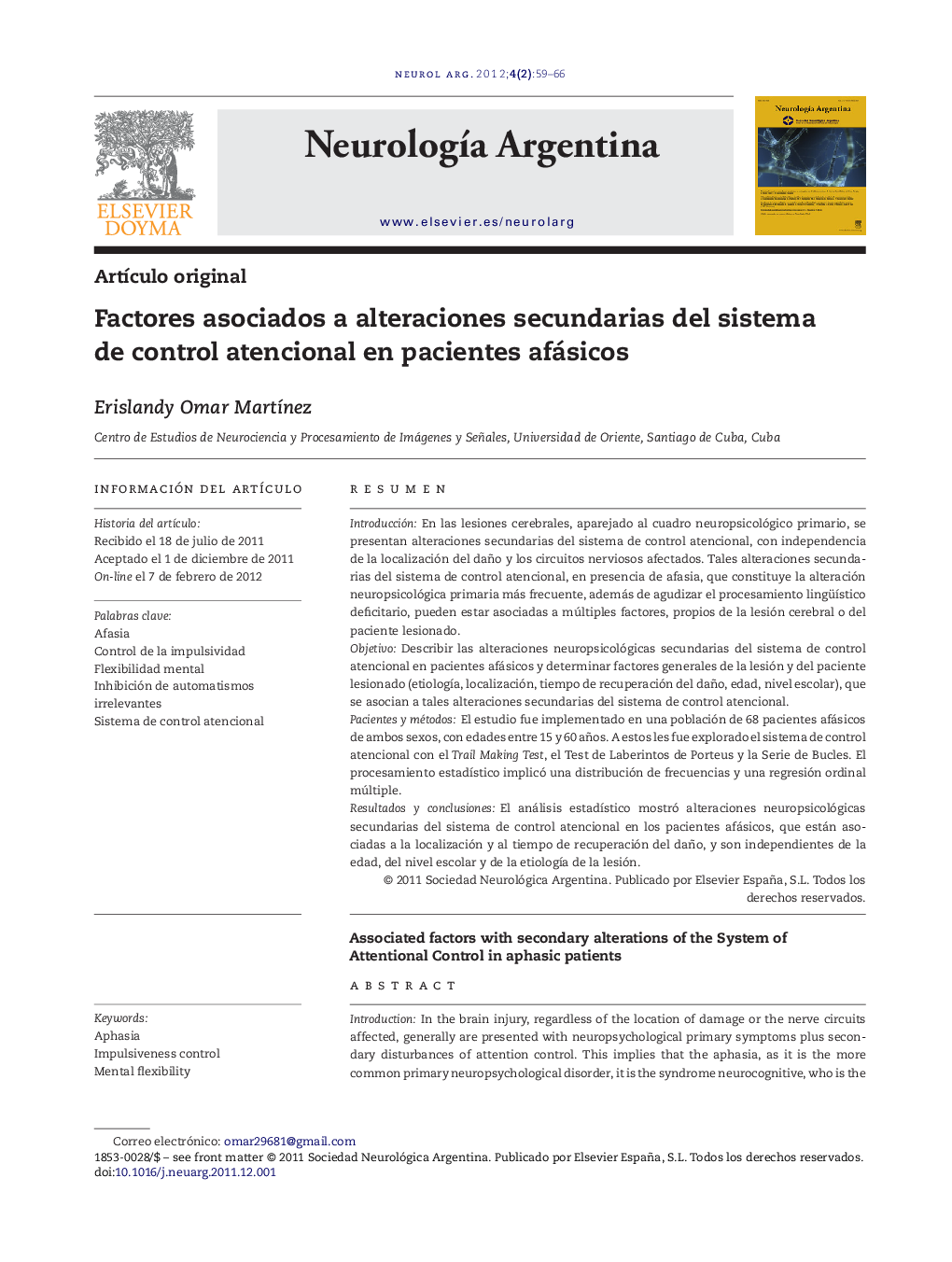| Article ID | Journal | Published Year | Pages | File Type |
|---|---|---|---|---|
| 3076910 | Neurología Argentina | 2012 | 8 Pages |
ResumenIntroducciónEn las lesiones cerebrales, aparejado al cuadro neuropsicológico primario, se presentan alteraciones secundarias del sistema de control atencional, con independencia de la localización del daño y los circuitos nerviosos afectados. Tales alteraciones secundarias del sistema de control atencional, en presencia de afasia, que constituye la alteración neuropsicológica primaria más frecuente, además de agudizar el procesamiento lingüístico deficitario, pueden estar asociadas a múltiples factores, propios de la lesión cerebral o del paciente lesionado.ObjetivoDescribir las alteraciones neuropsicológicas secundarias del sistema de control atencional en pacientes afásicos y determinar factores generales de la lesión y del paciente lesionado (etiología, localización, tiempo de recuperación del daño, edad, nivel escolar), que se asocian a tales alteraciones secundarias del sistema de control atencional.Pacientes y métodosEl estudio fue implementado en una población de 68 pacientes afásicos de ambos sexos, con edades entre 15 y 60 años. A estos les fue explorado el sistema de control atencional con el Trail Making Test, el Test de Laberintos de Porteus y la Serie de Bucles. El procesamiento estadístico implicó una distribución de frecuencias y una regresión ordinal múltiple.Resultados y conclusionesEl análisis estadístico mostró alteraciones neuropsicológicas secundarias del sistema de control atencional en los pacientes afásicos, que están asociadas a la localización y al tiempo de recuperación del daño, y son independientes de la edad, del nivel escolar y de la etiología de la lesión.
IntroductionIn the brain injury, regardless of the location of damage or the nerve circuits affected, generally are presented with neuropsychological primary symptoms plus secondary disturbances of attention control. This implies that the aphasia, as it is the more common primary neuropsychological disorder, it is the syndrome neurocognitive, who is the most frequently associated with secondary alterations of the Attentional Control System. Such attention disorders, as well as exacerbate the deficit language processing in aphasia may be associated with multiple factors, related to the injury or the injured patient.ObjectiveDescribe the secondary neuropsychological alterations of Attentional Control System in aphasic patients, and to determine general factors of injury and of the injured patient (etiology, location, time of recovery of the damage, age, grade level), which are associated to such secondary alterations of the Attentional Control System.Patients and methodsThe study population was made up by 68 aphasic patients of both sexes, and aged between 15 and 60 years. These were applied the Trail Making Test, Porteus Test labyrinths and the series of loops, to explore changes in the Attentional Control System. Statistical processing carried out by means of a frequency distribution and a multiple Ordinal regression.Results and conclusionsStatistical analysis showed that the secondary neuropsychological alterations of Attentional Control System in aphasic patients, are associated with the location and at the time of recovery of the damage, and are independent of age, grade level and the etiology of the injury.
